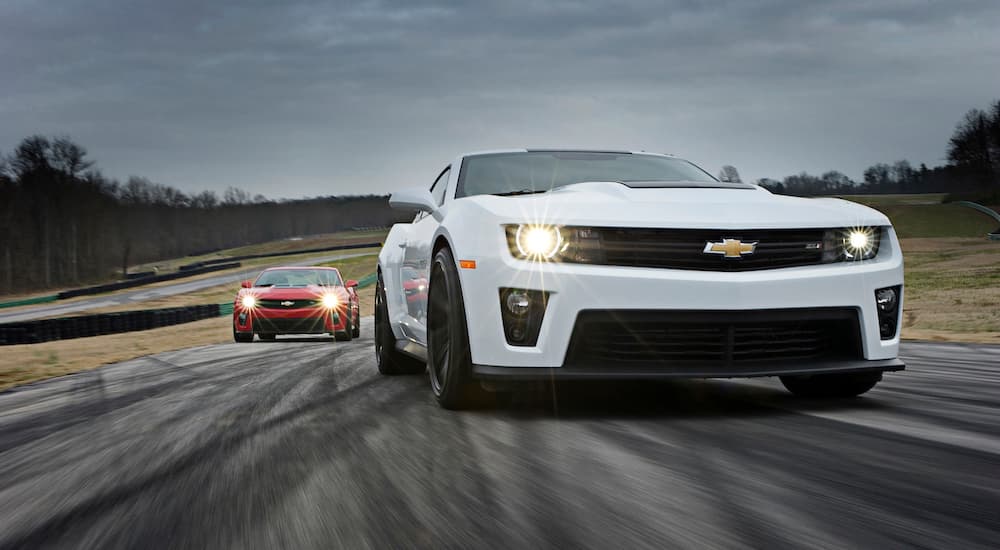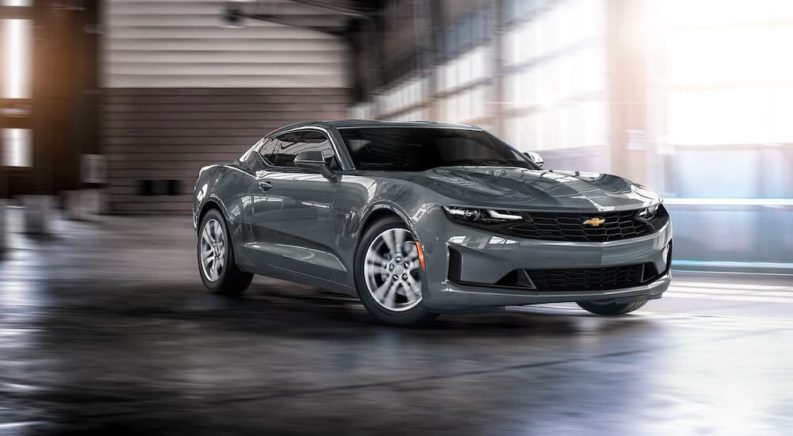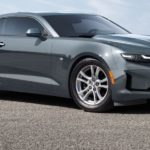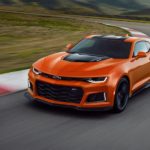Although you’ll find a lot of different models at your local Chevy dealer, nothing else has the legacy of power and style that the Camaro does. The Camaro has been around for more than 50 years now, with only a short break, but it would seem that it won’t make it to its 60th anniversary. Chevy reportedly has plans in the works to see the current Camaro end, but what will the future hold for this much-loved model? At the moment, it looks like there’s not much ahead for it, but that could change, and perhaps it will be reborn as something new and exciting for the modern era – only time will tell.
The Origins of the Chevy Camaro
Although the first Camaro was released for the 1967 model year, it had been in development for quite a while before that as Chevy and GM were looking for an answer to the Ford Mustang. During development, word started to spread among the automotive press that Chevy was working on something with a project code-named “Panther.” In a marketing move that was truly unique, on June 21, 1966, telegrams were sent to a couple hundred auto journalists telling them to save time on June 28th for an important meeting and, “Hope you can be on hand to help scratch a cat.” The message was signed by John Cutter in Chevy’s public relations but also naming him as “SEPAW secretary.”
This was followed the next day by another telegram saying, “Society for the Eradication of Panthers from the Automotive World [SEPAW] will hold first and last meeting on June 28,” again from John Cutter. This was a bizarre pair of messages and certainly got the attention of the press; Chevy could do something like this today through social media, and it would work just as well. To have created such viral marketing in the 1960s was a stroke of pure genius and a great way to get people talking about something that hadn’t even been revealed yet.
On June 28th, GM held a press conference in real-time across 14 cities via telephone, the first time this had been done, and dubbed all attendees charter members of SEPAW. At this conference, GM revealed their all-new model and the name “Camaro,” which they had chosen to be similar to other cars in their lineup (Corvette, Chevelle, etc.) and which they felt suggested comradeship between good friends. When asked, “What is a Camaro?” the official response was, “A small, vicious animal that eats Mustangs.” Point taken.
The reveal of the Camaro occurred in Detroit in September of 1966 when it was first shown off, and then again a week later in Los Angeles. A week after that, it was introduced to the public and went on sale a few days later, at the end of September. This first Camaro was released for the 1967 model year, and it was a two-door pony car available as both a standard coupe and a convertible. It had numerous engines available, including a variety of V8s, and featured a rear-wheel drive (RWD) powertrain. The first generation of the Camaro was relatively brief, lasting only through the 1969 model year; a revamped second-generation model was released in 1970.

Changes Through the Years
After its short introductory generation, the second-generation Camaro was introduced in early 1970 and built on what had come before. This era for the Camaro ran through 1981 and helped fully define what this pony car was all about. It kept some key aspects from its initial design but introduced many new elements and was restyled to match the demands of car buyers throughout the 1970s. There were updates for it in 1974 and 1978, but it wouldn’t get a new generation until the 1980s.
The third-generation Camaro was released for the 1982 model year and was the first generation to include fuel injection, a standard OHV four-cylinder engine, and more features. This third generation lasted throughout the 1980s and helped cement the look and feel of the Camaro for a new era of drivers. Various performance-focused options like the IROC-Z trim and 1LE performance package were offered throughout this generation.
In 1993, Chevy released a fourth generation of the Camaro that featured a full redesign on an updated platform. It retained many key elements that had made it so popular, like front and rear seating, coupe and convertible options, and RWD. It also introduced plenty of new things, like a six-speed manual transmission and standard anti-lock brakes. The SS trim returned with the 1996 model year after it was dropped in 1972 and was a popular option throughout the rest of this generation, which concluded with the 2002 model year.
The Legacy Comes to an End
In 2001, GM announced that the 2002 model year would be the last for the Camaro, citing a decrease in the popularity of sports cars among American car buyers. At that time, SUVs were beginning to dominate the market – as they still do – and models like the Camaro no longer sold as well as they once did. The best year ever for the Camaro was 1978, when more than 260,000 models were sold; by comparison, just over 42,000 were sold in 2000. GM canceled the Pontiac Firebird that same year; less than a decade later they discontinued the entire Pontiac brand. But Chevy lived on and the Camaro wouldn’t be put to rest forever…
The Return of the Camaro
Although GM canceled the Camaro after 2002, by 2005, they were already working on concepts for a fifth-generation version of their legendary pony car. It seems strange to me to completely cancel something and then work on bringing it back just a few years later, but perhaps absence truly does make the heart grow fonder. Then again, it can hardly be a coincidence that Ford released a new generation of the Mustang for the 2005 model year, while Dodge brought back the Charger after nearly two decades for the 2006 model year – it would seem the car market was ready for pony cars at that time. The Charger made its return as a four-door performance sedan, which is a potential spoiler for the Camaro’s future.
Though work began in 2005, and a concept model was shown off in the years after that, the fifth generation of the Camaro didn’t come into being until the 2010 model year. It returned on an all-new platform and architecture, with numerous trims and impressive engines, including an available 6.2L V8 that produced 426 hp. This generation was updated for the 2014 model year and then followed up by a sixth-generation Camaro released in 2016. There was a refresh for this generation in 2019, but since then, people have wondered what the future would hold for this gorgeous piece of machinery.
The Legacy Comes to an End (Again)
It would seem that what the future holds is cancellation again. Word has gone around that Chevy will discontinue the Camaro following the 2024 model year as it retires the modern Alpha platform that it’s built upon. Some people have wondered if it could live on in a new generation on GM’s A2XX platform, which Cadillac uses for the CT4 and CT5, but there are no signs of that happening. Instead, it would seem that the Camaro has simply reached the end of its lifespan and will be fading away once more.
What Does the Future Hold?
Of course, that’s just the Camaro as we’ve known it for the past 55 years – it’s far from the only model at GM and Chevy that’s changing. Rumors have begun to swirl amongst the automotive press that as part of its shift to an all-electric lineup by 2035, GM is working on a new Battery-Electric Vehicle (BEV) to take the Camaro’s place in its inventory. The early word is that it will be a four-door performance sedan and utilize GM’s new Ultium battery platform.
Whether this model will utilize the Camaro name is anyone’s guess, but it would be an interesting way to give this beloved model a new identity in a lineup where it’s been largely overshadowed by the Corvette in recent years. We’ll have to wait and see what happens, but a BEV four-door Camaro with dual motors and up to 1,000 hp (we’ve seen this with the new GMC Hummer EV) would be a hell of a thing to drive!





